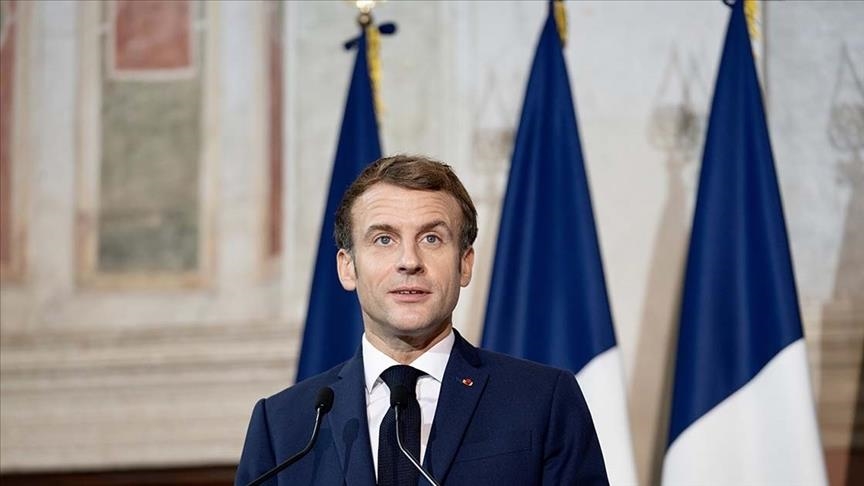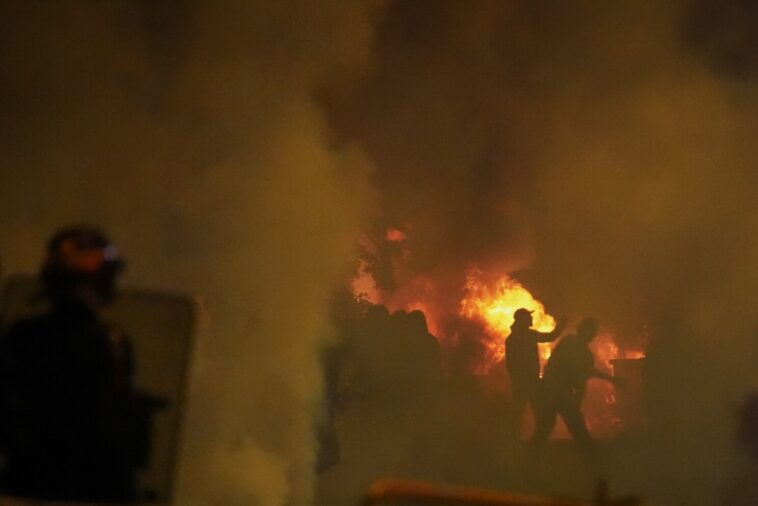France is currently grappling with a wave of unrest following the fatal police shooting of a 17-year-old boy of Algerian and Moroccan descent during a traffic stop in a Paris suburb.
The incident has sparked widespread anger and led to successive nights of clashes with police across the country.

In response, President Emmanuel Macron has deployed 40,000 police officers across France in an attempt to quell the violence.
The teenager, identified as Nahel M., was shot dead in Nanterre, a working-class town on the western outskirts of Paris.
The incident was captured on video, which went viral online, contradicting initial police reports that claimed the officer had shot at the teenager because he was driving at him.
The video footage instead showed two police officers standing by a stationary car, with one pointing a weapon at the driver.
France has Halted all Public Transport across the Nation beginning later tonight as 40,000 Federal and Local Police have been Deployed across the Country in hopes to Quell the Nationwide Protests and Riots that have been ongoing for almost 2 Days now, due to the Shooting Death of… pic.twitter.com/ci3vvSAv8V
— OSINTdefender (@sentdefender) June 29, 2023
A voice is heard saying: “You are going to get a bullet in the head.”
The officer then appears to fire at point-blank range as the car abruptly drives off.
The officer involved has been put under formal investigation for voluntary homicide. The local prosecutor, Pascal Prache, stated that the officer has acknowledged firing a lethal shot, telling investigators he wanted to prevent a car chase, fearing he or another person would be hurt after the teenager allegedly committed several traffic violations.
The incident has ignited longstanding complaints of police violence and systemic racism within law enforcement agencies, particularly in the low-income, racially mixed suburbs that ring major cities in France.
The unrest has revived memories of the 2005 riots that convulsed France for three weeks and forced then-president Jacques Chirac to declare a state of emergency.
In Nanterre, protesters torched cars, barricaded streets, and hurled projectiles at police following a peaceful vigil. Graffiti reading “Vengeance for Nahel” was scrawled across buildings and bus shelters.
Local authorities in Clamart, 8 km from central Paris, imposed a nighttime curfew until Monday, and all bus and tram services in the greater Paris region were halted after 9 p.m.
Despite the government’s appeals for de-escalation, towns and cities nationwide are bracing for further rioting. Interior Minister Gerald Darmanin stated that the state’s response must be extremely firm. Macron, while condemning the unrest, described the shooting as unforgivable.
The case of Nahel has particular resonance because it was filmed, leading many to believe that without the video footage, the case would not have been taken seriously.
This incident has sparked a nationwide conversation about police conduct, with many demanding justice and reform of law enforcement in the country.
FAQs
What sparked the recent unrest in France?
The unrest was sparked by the fatal police shooting of a 17-year-old boy of Algerian and Moroccan descent during a traffic stop in Nanterre, a suburb of Paris. The incident was captured on video, which contradicted initial police reports and went viral online, leading to widespread anger and subsequent clashes with police across the country.
How has the French government responded to the unrest?
In response to the unrest, French President Emmanuel Macron has deployed 40,000 police officers across the country in an attempt to quell the violence. The officer involved in the shooting has been put under formal investigation for voluntary homicide.
What are the allegations against the police officer involved in the shooting?
The police officer involved in the shooting is accused of shooting the teenager at point-blank range as he sat in a stationary car. This contradicts initial police reports that claimed the officer had shot at the teenager because he was driving at him. The officer is now under formal investigation for voluntary homicide.
How has the public reacted to the shooting and subsequent unrest?
The shooting and subsequent unrest have ignited longstanding complaints of police violence and systemic racism within law enforcement agencies in France, particularly in low-income, racially mixed suburbs. The incident has sparked a nationwide conversation about police conduct, with many demanding justice and reform of law enforcement in the country.
What measures are being taken to prevent further unrest?
In addition to the deployment of 40,000 police officers, local authorities in some areas have imposed nighttime curfews, and all bus and tram services in the greater Paris region have been halted after 9 p.m. to prevent further unrest. The French government is appealing for de-escalation and has condemned the unrest.

